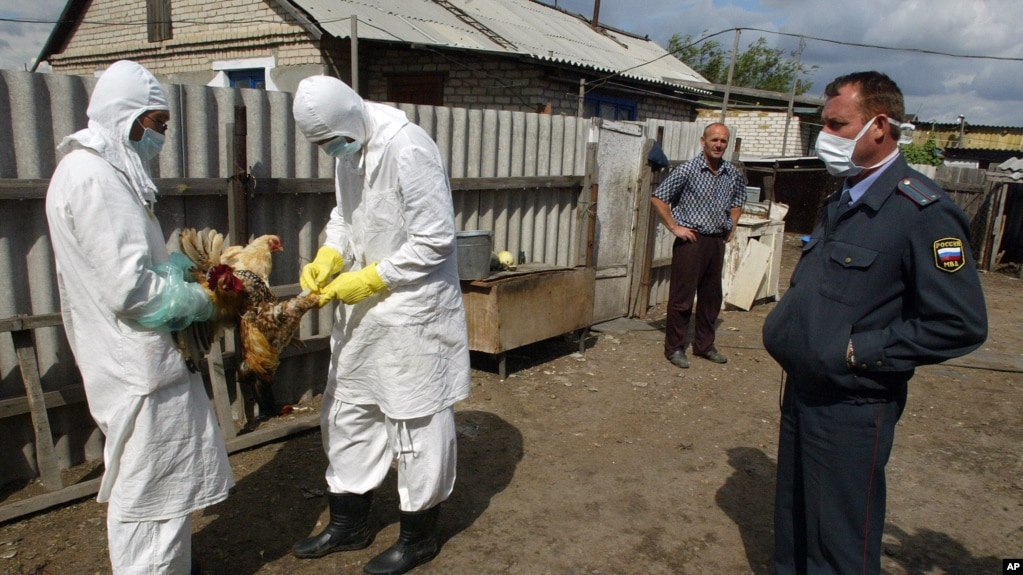Annie
Diamond Member
- Nov 22, 2003
- 50,848
- 4,827
- 1,790
In this case, we are simpatico. He can't access the board, but he can email. When he sends me something that can work, I'll post in his name:
http://www.iht.com/articles/2005/06/06/opinion/edobama.php
http://www.iht.com/articles/2005/06/06/opinion/edobama.php
An avian flu pandemic could kill millions
Barack Obama and Richard Lugar The New York Times
WASHINGTON When we think of major threats, the first to come to mind are nuclear proliferation, rogue states and global terrorism. But another kind of threat is lurking, one from nature, not humans - an avian flu pandemic. An outbreak could cause millions of deaths and threaten the security of governments around the world.
This year, Dr. Julie Gerberding, director of the U.S. Centers for Disease Control and Prevention, called the possibility of avian flu spreading from Southeast Asia (its likely place of origin) "a very ominous situation for the globe." A killer flu could spread around the world in days, crippling economies. From a public health standpoint, Gerberding said, an avian flu outbreak is "the most important threat that we are facing."
International health experts say that two of the three conditions for an avian flu pandemic in Southeast Asia have already been met. First, a new strain of the virus, called A(H5N1), has emerged, and humans have little or no immunity to it. Second, this strain can jump between species. The only remaining obstacle is that A(H5N1) has not yet mutated into a form that is easily transmitted from human to human.
However, there have been some alarming developments. In recent months, the virus has been detected in mammals that have never previously been infected, including tigers, leopards and domestic cats. This suggests that the virus is mutating and could eventually emerge in a form that is readily transmittable among humans, leading to a full-blown pandemic. In fact, according to government officials, a few cases of human-to-human spread of A(H5N1) have already occurred.
The precedent that experts fear is the 1918 flu pandemic, which began in the American Midwest and swept the planet in the era before air travel, killing 20 million to 40 million people.
At the moment, effective responses to an avian flu pandemic are limited and would come far too late for many people in Southeast Asia; so far more than 60 percent of those diagnosed with avian flu have died. There is no proven vaccine for the A(H5N1) strain and it could take months to produce a fully effective one. Some antiviral treatments may help flu sufferers, but they are not widely available and must be administered within 24 hours after the onset of symptoms.
It is essential for the international community, led by the United States, to take decisive action to prevent a pandemic.
So what should we do? Recently, the World Health Organization called for more money and attention to be devoted to effective preventive action, appealing for $100 million.
The U.S. Congress responded promptly. A bipartisan group of senators obtained $25 million for prevention efforts (a quarter of the request, the traditional contribution of the United States), allowing U.S. agencies to improve their ability to act.
In addition, the Senate Foreign Relations Committee unanimously approved legislation directing President George W. Bush to form a senior-level task force to put in place an international strategy to deal with the avian flu. We urge the Bush administration to form this task force immediately, without waiting for legislation to be passed.
But these are only modest first steps. International health experts believe that Southeast Asia will be an epicenter of influenza for decades. We recommend that the Bush administration work with Congress, public health officials, the pharmaceutical industry, foreign governments and international organizations to create a permanent framework for curtailing the spread of future infectious diseases.
Among the parts of that framework could be these:
Increasing international disease surveillance, response capacity and public education and coordination, especially in Southeast Asia.
Stockpiling enough antiviral doses to cover high-risk populations and essential workers.
Accelerating research into avian flu vaccines and antiviral drugs.
Establishing incentives to encourage nations to report flu outbreaks quickly and fully.
In an age when you can board planes in Bangkok or Hong Kong and arrive in Chicago, Indianapolis or New York in hours, everyone must face the reality that these exotic killer diseases are not isolated health problems half a world away, but direct and immediate threats to security and prosperity.


